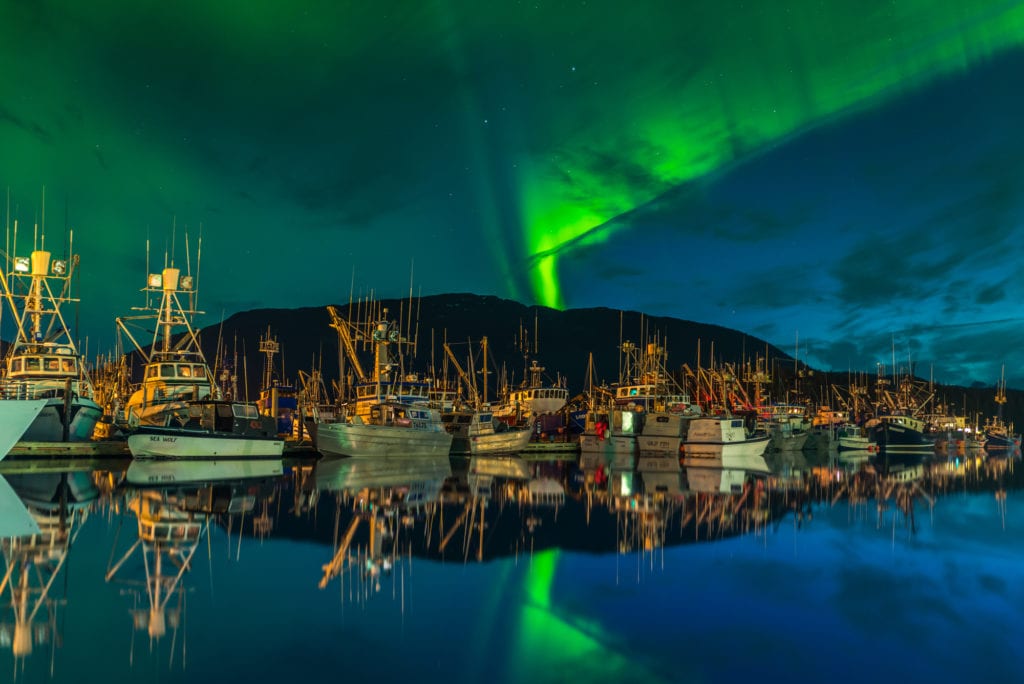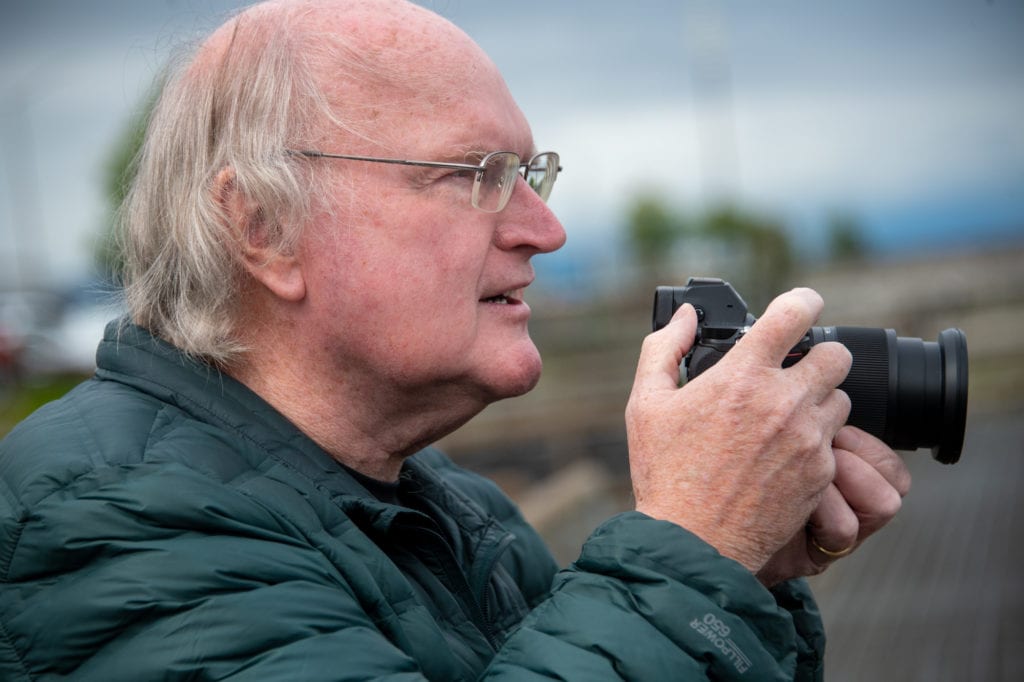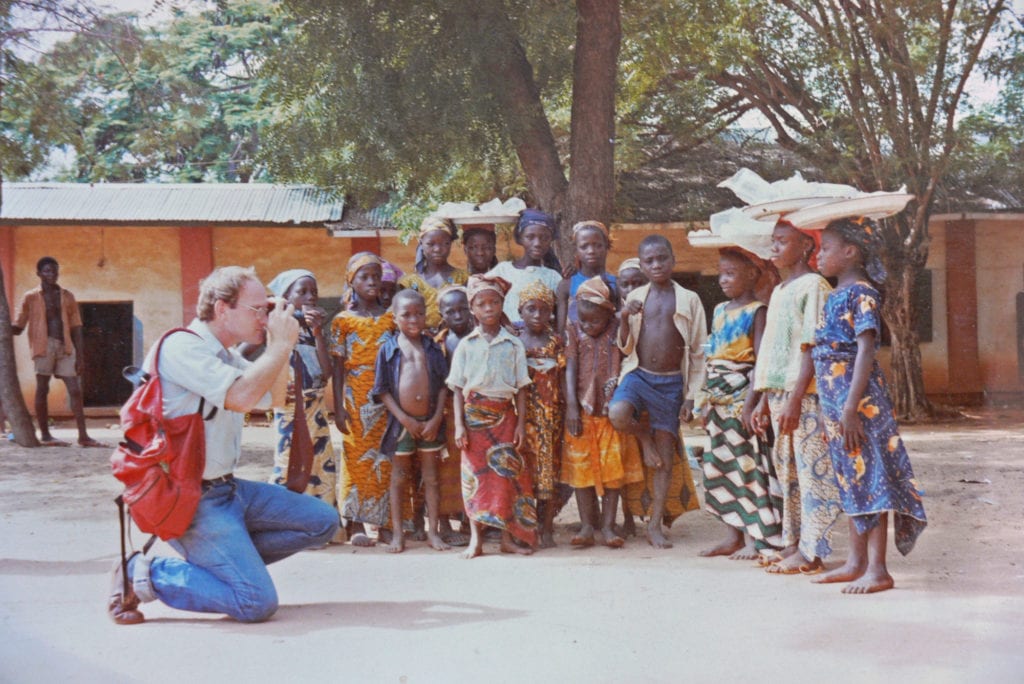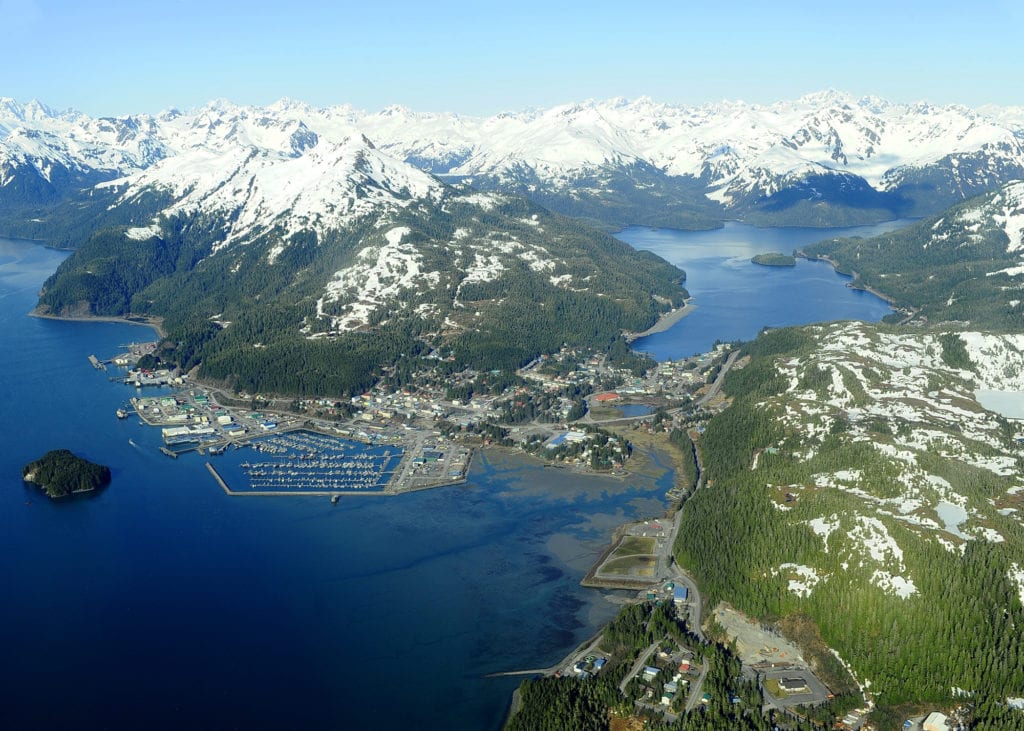
You’ve seen his photos in your Facebook news feed: lushly colorful images of auroras and sunsets over the Chugach Mountains, or shots that make otherwise ordinary harbor scenes seem to vibrate with enchantment. But you may not know much more about the photographer than his name, which appears stamped at the bottom-left corner of each picture.
David Little spent the summer of 2005 in Cordova, working for the Transportation Security Administration. Three years later, when he saw the opportunity to move back to Cordova permanently, he took it.
“I had other places to choose from, but I chose Cordova particularly because I wanted to photograph this area,” Little said. “Cordova, even just coming in when I landed, was beautiful green — millions of shades of green.”
Little found his vocation at age 8 when he picked up his mother’s Kodak Baby Brownie camera, a molded Bakelite device that retailed for $1. Little’s father, an Air Force staff sergeant, brought his family to Japan, the home of Nikon, Canon and Pentax.
“I would take the most horrible photos you have ever seen in your life!” Little recalled. “Nothing but smears of light.”
In the 1960s, it was unusual to see people walking around with cameras dangling from their necks — photography, like typing, remained a specialty skill. Over the years, Little upgraded his equipment and refined his technique, leafing through issues of American Photographer magazine and developing his own film at a local hobby shop. Little also visited photography spots such as the Great Buddha of Kamakura, a colossal bronze statue iconic of Japanese Buddhism. Today, Little works with a Nikon Z 7, a powerful but lightweight camera.

Aside from 121-ton Buddhas, Little rarely captures portraits of people, and never dabbles in abstract photography. Landscape shots and archetypal images of Cordova’s streets and harbor hold a universal appeal, not just to the town’s 2,100 residents, but also to the thousands of visitors who pass through each year. Little describes his style as documentary, and many of his images of fishing vessels are just that: simple, gritty, matter-of-fact. But, just as often, his photos glow with hues that lend them an almost fantastical quality.
“People will say that they like a natural look, but, when they’re actually shown photos, they do like them a little more saturated,” Little said.
Little’s photography has aided Cordova in building its own mythology, lending everyday work and life a glamor not always obvious in the moment.
“You can see a boat on a rainy day — it looks pretty cool,” Little said. “But, let me tell you something: if you’re standing on that boat in the rain, you’ve got a different feeling about it.”

In the decades since Little picked up his mother’s Baby Brownie, photography has become a constant, often unthinking, activity. Many of Little’s photographic heroes, such as Edward Weston and Ansel Adams, practiced in an era when the photographer was something between a scientist and a painter. Intentionality, Little insists, is the most important quality for a photographer — something that was a must when supplies were expensive and equipment delicate.
“Today, we just sit at a computer and — poof!” Little said. “Okay, you’ve got to learn Photoshop, but compared to what they had to do, it’s a different world.”
Little took a significant step forward when he began printing out oversized copies of his photos at home. Almost any photo looks reasonably good when viewed on a 6-square-inch screen, but a large print lays the flaws of your technique ruthlessly bare. This process, Little said, has given him many a prod in the right direction.
“You’ve taken that moment and stretched it out — forever, you might say,” Little said. “Any thoughtlessness that you had, or any sloppiness, is forever, too. It really grabs your attention, I think, to print your photos, to get them off of the computer.”

Little’s images have spread in calendars, in the pages of Alaska Magazine and Alaska Beyond, the in-flight magazine of Alaska Airlines. One particularly popular 2010 aerial shot of Cordova was turned into a puzzle. Little’s Facebook page has connected him to thousands of followers, not all of whom know his face, but all of whom know his images. For Little, photography has been more than a pastime, more than a career: a way to engage with the world that has demanded he look past superficial first impressions.
“Every photo is a deliberate choice,” Little said.





